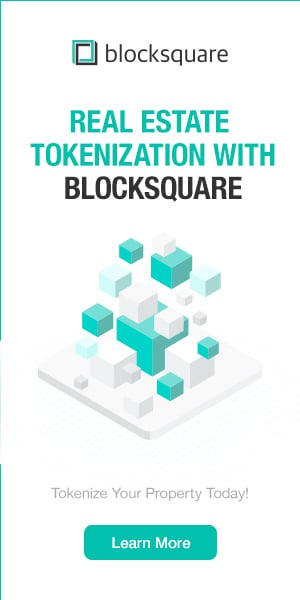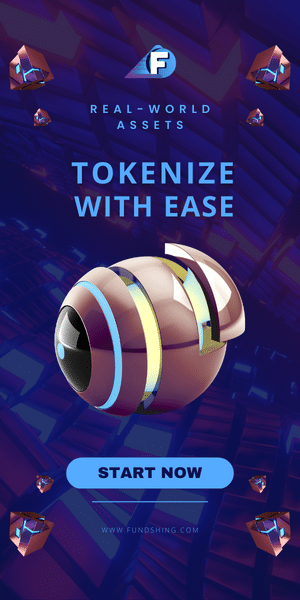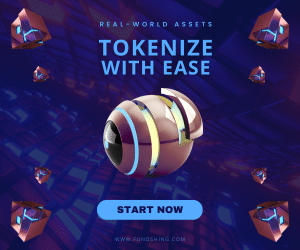Tokenizing Time: A New Paradigm for Value Exchange?
Time and Money are not only frequently exchanged for one another but are closely linked. Tokenizing time cryptographically makes logical sense as a blockchain use case. But is it feasible, and is it worth the trouble?
Time is – in a sense – the hardest of all assets. It cannot be minted, and once burned, it cannot be recovered. It could be said that the passing of time is the ultimate encryption process.
From this perspective, representing time as a cryptographic token is a logical application of blockchain technology.
But what would be the point exactly? Let’s find out.

Time is already tokenized
One of the first major applications of blockchain was the Bitcoin payment network. In Satoshi’s vision, the aim was to create an alternative to fiat money that was beyond the reach of institutional control.
Working from the other side of the equation, the American investor and futurist George Gilder has described money itself as a form of ‘tokenized time’.
This is by no means a bizarre claim, as there is an intrinsic connection between the two. When we observe that ‘time is money’, we are acknowledging this connection.
Money is a way of taking ownership of the time of others, be they lawyers, car mechanics, or portrait painters. By doing so, we can avoid having to use our own time to prepare a legal document, fix a car, or paint a self-portrait. Not to mention the time we would need to acquire the skills to do all those things in the first place.
Gilder has a less intuitive – but more interesting – claim. He asserts that everything in the universe – not just money, but everything physical – is ultimately based on time, and hence time is itself the only ultimate currency. As he puts it, “[Time] remains scarce when everything else becomes abundant…The Fed can print money, but it can’t print time.”
In crypto terms, it is a deflationary asset in which we all have an equal and immutable stake. Airdropped, as it were, at birth.
By tokenizing time with traditional money, we have gained the ability to put time in our pocket, buy more of it, trade it, and hence mitigate the scarcity of hours that circumscribes every human life.
So if traditional money has already tokenized time, why put it on chain?
The case for blockchain
A great deal of the world’s economic activity is based on people selling their time.
The exchange can be between an employee and an employer via a wage or salary. In the case of the freelance economy, or professions that bill by the hour (law, accounting etc.), the link between time and value is more or less direct.
If time is a vector for economic value, and the blockchain can digitally mimic the scarcity of time, it follows that inefficiencies in the time-based economy could be addressed by the benefits of tokenization.
Tokenization – proof of effort, in this context – makes the value of labor more liquid.
People are most familiar with the speculative forms of ‘value’ driven by demand and supply for a specific coin – meme coins such as DOGE being a typical example.
But the ‘real-world’ value of an hour spent coding or designing is – if anything – a better reference asset than an intangible ‘meme’, as it is based on a demonstrable, measurable activity that people want and will continue to want.
If time is truly the ‘hardest’ asset, it could be seen as superior to other real-world assets that are in the process of being tokenized, such as art, real estate, and traditional stocks & shares.
What problems could this solve?
Since individuals convert time into economic value in many different ways, it is neither feasible nor desirable to list all potential use cases of tokenized time.
But we can look at some hypotheses and real-life examples.
Gaming
For instance, modern-day gamers dedicate large amounts of time not only to playing games but also contributing to game development. This value is either recognized with in-game rewards (points, trophies, status, etc.) or frequently not at all.
Tokenizing time – as measured within the game via smart contracts – would enable contributors to provide proof of effort and exchange these hours for compensation or ownership of future revenue streams.
The blockchain makes these hours verifiable and portable (outside the game), and hence more valuable.
DAOs
Decentralized Autonomous Organizations (DAOs) originally held out the promise of an on-chain alternative to the traditional corporation, by leveraging the benefits of blockchain to democratize decision-making and distribute profits more fairly.
Many have struggled to make headway, owing to the arguably flawed approach of issuing a speculative token to attract investment, and wasting large amounts of this on mining rewards that largely end up in the hands of speculators.
An alternative use of funds would be to seek bids from various skilled individuals for existing workstreams or specific objectives agreed on by the group, or purchase the hours of needed experts (coders, writers, marketers, etc.) in advance.
As a side note, since time is a form of wealth that is equally distributed, stipulating that certain assets – such as voting rights – can only be purchased using time and not money precludes the common issue of those assets being concentrated in the hands of a small number of individuals, as frequently occurs when tokens are up for sale.
Entrepreneurs
Tokenized time creates the possibility of two skilled but cash-poor individuals in different countries literally trading time with one another, having agreed on a relative exchange rate – thus sidestepping the need for ‘money’ (traditional tokenized time) altogether.
This could be useful for entrepreneurs who are short of starting capital but rich in a valuable skill they could trade (such as coding) in exchange for a skill that they need (such as accounting). The borderless nature of the blockchain makes it possible to engage in these transactions cheaply.
In this, as in all of the above cases, the transparency of the blockchain would make it possible to confirm that hours were not being ‘double-counted’, and drastically reduce the potential for fraud. Not to mention the fact that no one can work 8000 hours per year.
So why hasn’t it been done?
There have been many attempts to tokenize time, some of which have failed, some of which have been successful, and some of which are still in too early a stage to make a judgment.
We can conclude that the idea has occurred to enough people to warrant an investigation into the topic.
Actual examples fall into two buckets: Individual IPOs and Time Marketplaces.
Individual IPOs
The origins of the tokenized time movement can be traced to the emergence of social tokens, defined loosely as tokens backed up by the reputation of an individual or a community.
The first mover: dAPP Boi
One of the first such tokens to make the direct link with time was dAPP Boi (Matthew Vernon). A talented designer, Vernon created a ‘collection’ of 100 tokens, each representing 1hr of his time, valued at $100 each.
Source: dAPP BOI
The tokens were redeemable in appropriate amounts for UI/UX design work, prototyping, brand design, and other professional tasks.
The dApp BOI website is still up, and is an interesting case study in the practicalities of personal time tokenization. For example, the website includes a list of terms and conditions, which (amongst other things) limit the use of tokens to legitimate activities only.
First followers: $MAGIC, $ALEX
His example inspired many similar tokenized, time-based task offerings, including the $MAGIC token issued by the MetaCartel founder Pet3r Pan, who uses it as a basis for offering services from podcast appearances to community-building advice.
In another variation on the theme, 23-year-old Alex Mesmej raised $20,000 via the Ethereum network by offering $ALEX tokens. The token holders would receive 15% of his income over the following 3 years, making the process arguably an exercise in tokenizing future time.
“Individual IPOs-as-a-service”
While it is possible to tokenize and sell one’s own time, companies like Roll offers ‘Personal Tokenization Services’, which allow any individual to create their own social currency, also allowing for tokens to be redeemed for tasks (e.g. social media shoutouts) and time ownership as well.
The Chubie app has a similar aim by tokenizing the time of Influencers, who can mint and sell ‘Time NFTs’ that entitle the buyer to a personalized video or meeting with the creator, whereupon the NFT is burned.
Source: Chubie
Time Marketplaces
The primary objective of time tokenization, as envisioned by many of its supporters, is to go beyond the one-to-many paradigm of the personal IPO, and to revolutionize the labor market as a whole.
The goal of Time Marketplaces can be seen as twofold:
- To expose the true value of labor to the market, thus enabling the discovery of a fair price for the work performed.
- In the case of freelance platforms, to eliminate the bureaucracy that eats into wages and holds freelancers hostage to inefficient processes.
A side-effect of (1) could be to restrict employers’ ability to take advantage of employees through unpaid overtime.
Failed or (apparently) abandoned projects
Actually implementing this, however, requires a functional marketplace with lower overhead costs and greater transparency than traditional platforms such as Upwork or Fiverr.
This would be a very difficult task even using traditional web2 infrastructure. Given the additional challenge of creating a new blockchain-based paradigm, it is small wonder that many projects have failed to progress beyond the mission statement phase (Build.so, Ladyboss).
Some have made it further than the idea stage. Newt’s Aika project (see the prototype demo here), proposed an NFT marketplace in which predetermined projects with defined times-to-complete could be minted and sold.
Timeswappers appears to have made it beyond the prototype stage, but now appears to be an abandoned project. This could be for any number of reasons, including fairly to acquire critical mass or overly purist governance principles (e.g. “leaderlessness”). Judging by the project’s labyrinthine tokenomics, highly suggestive of peak 2021, we could infer that over-optimistic financial assumptions are what brought it down.
Time New Bank & 2i2i
An emerging paradigm is that a Time Marketplace, like a standard DAO, will have its own token used as currency for activities that take place between members.
In the case of Time New Bank (TNB), an individual with a non-scalable, time-constrained service (e.g. a 90-minute training session) will seek bids via a transparent auction, with the bids made in TNB. The value of a user’s time increases with skill and experience, and can also be verified via one’s activity record in the marketplace.
A similar project is 2i2i which separates potential buyers into different tiers based on their responses to the auction. The value delivered by the service provider is called “Info” and the bid currency for which it is exchanged is “Energy”.
Source: 2i2i
Creativo
It may well be that – rather than attempting to replace mega Web2 platforms like Upwork – tokenized time may be highly effective in smaller, more targeted fields.
Creativo is a design shop for development services on demand (e.g. illustrators, app developers, and marketing specialists) that apparently leverages tokenized time to facilitate the exchange of value between clients and professional service providers.
It appears to be an enhancement to an existing marketplace, rather than a ‘web3 native’ attempt to wipe the slate clean.
The website explains its rationale for a blockchain-based system, which is worth quoting in full:
“Tokenized Time Consultants, developers, and coaches set their rates to a unified standard value, and clients get a universal currency for multiple providers. This allows flexible estimates that match the real work executed, which is supported by the logs and evidence. This tokenized time system is at the heart of the ecosystem and will help automate all the tasks that we handle manually today.”
The above rationale neatly summarizes four advantages of leveraging the blockchain: universality, fairness, verifiability, and efficiency.
GrandTime
Perhaps the example that combines ambition with pragmatism most remarkably is the GrandTime project. Its focus is on gig-based work and microtasks, and it aims to provide purchasers with a more cost-effective source of outsourced labor, while providing the laborers themselves opportunities to work and gain an education in crypto.
The project describes its aim as, “Connecting businesses and [a] crowd of workers in a single worldwide blockchain community, we get the right jobs to the right people at the right price.”
To make the system work, GrandTime leverages its proprietary “blockchain-enabled decentralized time ecosystem”, which appears to consist of several products, including a wallet, a community messaging platform, a decentralized exchange, and at least two separate marketplaces (one for tasks, one for NFTs).
It claims to have facilitated over 80,000 gig-based tasks (e.g. sharing a video, or commenting on a post). The website also includes details of operational items such as ‘multi-level post verification’, ‘smart matching mechanisms’, and ‘task-based crowd training and testing’.
Source: GrandTime
Even if only half of this is possible, or a quarter, it is surely indicative of a potential that remains untapped, especially as is it operating in an ultra-low margin business.
Conclusion
Some innovations simply require time to iron out the kinks. Other innovations – like cold fusion or perpetual motion – are fundamentally flawed.
It does seem, however, that in the case of tokenized time we have left the realm of pure speculation and entered the beginnings of implementation.
With a question mark still hovering over blockchain technology as a whole in the minds of many, it must be admitted that even if ultimately useless, this will be one of the more interesting failures.
It is also true that if tokenizing time can be made to work, it truly will revolutionize the world of labor.
Which one will it be? Time alone will tell.
Photo by Donald Wu on Unsplash
Read other stories: Deutsche Bank and Taurus Sign a Global Partnership
You Might also Like





















